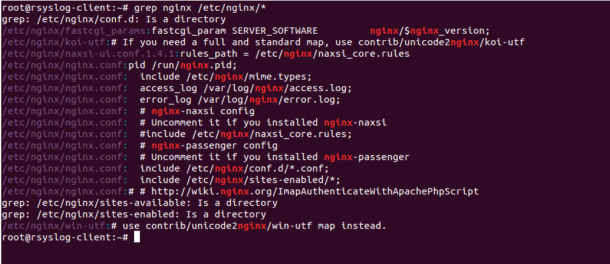

Notice that I don't use 2>/dev/null in this instance because I'm only listing the contents of a file path within my home directory, so I don't anticipate permission errors. The ls -R command lists the contents of a directory recursively, meaning that it doesn't just list the target you provide for it, but also descends into every subdirectory within that target (and every subdirectory in each subdirectory, and so on.) The find command has that function too, by way of the -ls option: $ find ~/Documents -lsģ554235 0 drwxr-xr-x 05:36 /home/seth/Documents/ģ554224 0 -rw-rw-r- 05:36 /home/seth/Documents/Fooģ766411 0 -rw-rw-r- 05:36 /home/seth/Documents/Foo/foo.txtģ766416 0 -rw-rw-r- 05:36 /home/seth/Documents/Foo/foobar.txt If you can't remember the exact name of the file, or you're not sure whether you capitalized any characters, you can do a partial and case-insensitive search like this: $ find / -iname "*foo*txt" 2>/dev/null Use 2>/dev/null to silence permission errors (or use sudo to gain all permissions). When you know the name of a file but can't remember where you saved it, use find to search your home directory. Whether you're on your own computer or trying to support someone on an unfamiliar system, here are 10 ways find can help you locate important data.

As its name implies, find helps you find things, and not just by filename. Or preview an image in fzf while scrolling using timg command line image viewer.The find command is one of the most useful Linux commands, especially when you're faced with the hundreds and thousands of files and folders on a modern computer. finder() ' -preview-window=bottomĬreate an alias for this in your bashrc for easy access. Now add the following lines to your bashrc. To do this, you may need to add a function to your bashrc. Or, you can follow the method explained below.

You can create an alias use the command like: cd $(find /home/$USER -type d | fzf) Here, you cannot just directly pipe fzf and cd together, because both are different processes. This is a bit trickier than the previous. Use fzf to cd into any directory from anywhere (advance) tree -afR /home/$USER | fzf Tree and FZF commandĬreate an alias for these commands, so that you don't want to type these again and again. Using fzf with tree command can help you find the absolute path of a particular file. Tree command lists files and directories along with their hierarchical connection. But if you want to use fzf to get a better look, run: history | fzf Use fzf to search within bash history Use fzf with tree command Of course, there is CTRL+R reverse search in the bash history. Now, let me show some practical usage of the fuzzy search with fzf. You can concatenate the options to make fzf visually pleasing. fzf colored fzf -color="bg:black,fg:yellow" Using the color property, you can set ANSI colors to fzf either as background, foreground or both. fzf -border=rounded fzf with border Apply background and foreground color There are several options like rounded, sharp etc. This will open a prompt of fzf where you can search for files in the current working directory. While fzf itself works properly, it is wise to use it in conjunction with other tools to make most out of it.
RECURSIVLY FIND FILE LINUX INSTALL
To install fzf in Ubuntu, open a terminal and run: sudo apt install fzf In this article, I am going to discuss two CLI tools that give you the ability to perform fuzzy searches in Linux:įzf is a fuzzy search tool available for Linux, where you can search for files interactively. Here, files from a specified location are searched by name and the user will get real-time results.įuzzy search is popular in web search engines, where a user starts entering the term, and it starts showing results related to the term. You can improve your file-finding experience in the terminal with fuzzy search.įuzzy search is an approximate search algorithm or technique. Usually, you type the command with your search parameters, press enter and it displays the findings. That's the standard answer and there is nothing wrong with it. How do you find files in the Linux command line? You use the find command.


 0 kommentar(er)
0 kommentar(er)
